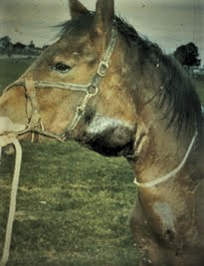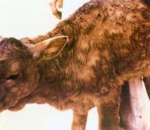Strangles is an acute disease of mostly young horses characterized by catarrhal inflammation of the upper respiratory tract along with abscessation and suppuration of adjacent lymph nodes. Strangles in horses is caused by Streptococcus Equi which is a gram-positive coccus. Streptococcus Equi is very resistant and it may remain alive for several months in purulent discharge. Strangles is the 2nd most life-threatening bacterial disease after glanders.
- In the dictionary, Strangle means to kill someone by exerting pressure on the neck or squeezing the throat. Strangles in horses is more prevalent than in donkeys and mules.
What is strangles in horses?
Strangles is a bacterial, acute, highly contagious disease of equines (horses, donkeys, mules) that is characterized by upper respiratory tract infection and abscessation of lymph nodes in the throat region.
Transmission of strangles
It occurs through both direct and indirect contact. The nasal discharge of an infected animal and pus from open abscesses are the most important source of transmission or spread of strangles. The disease may be transmitted by stallion through copulation or to foal during suckling. Coughing and sneezing of infected animals lead to droplets having infectious organisms. So infection through inhalation OR droplet infection is common. Indirect contact includes transmission through fomites e.g., buckets, stable, pasture, etc.
Predisposing Factors
- Over Crowding
- Poor Housing
- Poor Sanitation
- Addition of new horse in farm.
Horse Strangles Symptoms
Here is the well-researched list of horse strangles symptoms;
- The high rise of temperature.
- Reluctancy to move, eat or drink.
- Respiratory obstruction and difficulty swallowing
- Nasal discharge (initially mucoid but later on it becomes purulent).
- Soft cough due to pharyngitis and laryngitis.
- Suppuration of retropharyngeal and submandibular lymph nodes.
- Mostly horses position their head low and extended.
- Vaginal infection after coitus with an infected stallion.
- Death due to secondary pneumonia.

Fatal complications of strangles include:
- Bastard strangles
- Purpura haemorrhagica
In bastard strangles, infection is disseminated to unusual body sites like mediastinal and mesenteric lymph nodes that may develop abscesses. Similarly, a brain abscess may develop and rupture leading to the sudden death of the animal.
In purpura hemorrhagic, immune complexes are formed between bacterial components and antibodies of the horses. These complexes lead to the acute inflammation of the peripheral blood vessels.
Minor complications of strangles include:
- Post strangles myocarditis
- Purulent cellulitis
- Laryngeal hemiplegia
- Anemia
- Guttural pouch empyema
Vaccination for strangles in horses
Vaccination of healthy animals should be done with the killed streptococcal vaccine. 10 to 20 ml subcutaneously with a one-month interval may be recommended for horses having 2 years of age.
How to treat strangles in horses?
Treatment of strangles includes :
- The availability of a dry, warm, dust-free, stable environment.
- Availability of easily digestible food.
- To facilitate the maturation of abscesses, warm compresses should be applied.
- Use of NSAIDs judiciously for pain and fever
- Penicillin is used as a drug of choice (@22,000 IU/kg, bid for 3-5 days, IM) at the early stage of infection .
- Tracheostomy & Intravenous fluid therapy is required in horses that are showing lymph node abscesses.
- Aspiration and drainage of abscesses are required. Flush the ruptured abscesses with povidone-iodine until the discharge stops and it heals.

Frequently Asked Questions (FAQ)
Strangles is an infectious disease of horses caused by a gram-positive bacteria called Streptococcus Equi. Strangles is an acute disease of mostly young horses characterized by catarrhal inflammation of the upper respiratory tract along with abscessation and suppuration of adjacent lymph nodes.
Stangles can spread through both direct and indirect contact. A healthy horse can get strangles from the nasal discharge or pus of open abscesses of an infected horse. The disease may be transmitted by stallion through copulation or to foal during suckling. Coughing and sneezing of infected animals lead to droplets having infectious organisms. So infection through inhalation OR droplet infection is common. Indirect contact includes transmission through fomites e.g., buckets, stable, pasture, etc.

